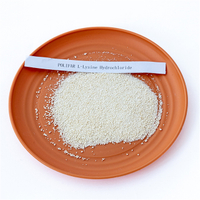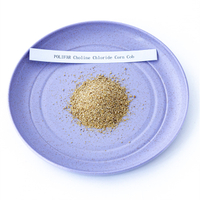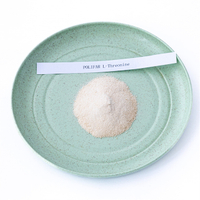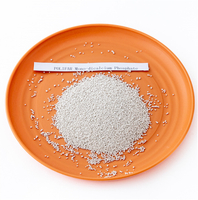Views: 0 Author: Site Editor Publish Time: 2022-11-17 Origin: Site








Phosphate, the salt of phosphoric acid, is one of the natural components of almost all foods, and is widely used in food processing as an important food ingredient and functional additive.
What are Phosphates?
The naturally occurring phosphate is phosphate rock (containing calcium phosphate). Phosphate can be obtained by reacting sulfuric acid with phosphate rock to produce calcium dihydrogen phosphate and calcium sulfate that can be absorbed by plants.

Phosphorus is an important mineral element necessary for the human body. The main source of phosphorus intake by the human body is natural food or food phosphate additives. Phosphate is one of the natural components of almost all foods. Because phosphate can improve or endow food with a series of excellent properties, it has been used in food processing as early as more than 100 years ago, and it has been used in large quantities since the 1970s. Phosphate is one of the most widely used and used food additive categories. As an important food ingredient and functional additive, it is widely used in the processing of meat products, poultry products, seafood, fruits, vegetables, dairy products, bakery products, beverages, potato products, seasonings, convenience foods, etc. Phosphates used in food processing are usually sodium salts, calcium salts, potassium salts, and iron and zinc salts as nutritional fortifiers. There are more than 30 varieties of food-grade phosphate commonly used. Sodium phosphate is the main consumption type of food phosphate in China. With the development of food processing technology, the consumption of potassium phosphate is also increasing year by year.
Uses of Phosphate Additives in Food
1. Buffer function:
The pH value of phosphate ranges from moderately acidic (PH~4) to strongly alkaline (PH~12). When different phosphates are matched in different proportions, the pH value can be stabilized between PH4. 5-11. 7 different levels of buffers. In the pH range of most foods (PH3. 5-7. 5), phosphate can be used as an efficient pH regulator and pH stabilizer to make food taste more delicious. The strongest buffer is orthophosphate. For polyphosphate, as the chain length increases, the buffering capacity will decrease.
2. Water-holding function:
Polyphosphate is a highly hydrophilic moisture retaining agent, which can stabilize the moisture contained in food well. The quality of its water holding capacity is related to factors such as the type of polyphosphate, the amount added, the pH value of the food, and the ionic strength. For meat products and seafood, pyrophosphate has the best water holding capacity, followed by tripolyphosphate. As the chain length increases, the water holding capacity of polyphosphate will weaken.
3. Polyanion effect:
Polyphosphate is a kind of polyelectrolyte and has the characteristics of inorganic surfactant, which can disperse insoluble substances in water or form a stable suspension to prevent the suspension from adhering and agglomerating. Since polyphosphate can make the hydrosol colloid of protein form a film on the fat globule, so that the fat can be more effectively dispersed in water. Therefore, it is widely used in the phosphorylation of starch, the dispersion of pigments, emulsified foods (dairy products, ice cream, salads, sauces, etc.), and as a dispersion stabilizer for sausages, minced meat products, and surimi products. For straight-chain polyphosphate, its emulsifying and dispersing ability increases with the increase of chain length.
4. Chelation function:
Polyphosphate is easy to form soluble complexes with metal cations in the solution, thereby reducing the hardness of water and inhibiting the oxidation, catalysis, discoloration and decomposition of vitamin C caused by metal cations such as Cu2+ and Fe3+. It can prevent and delay fat oxidation, prevent meat, poultry and fish from spoilage, maintain color and luster, and prolong the shelf life of food.
Chelation of polyphosphates depends on chain length and pH. Generally speaking, long-chain polyphosphate has a strong chelating ability for light metal ions, and it increases with the increase of pH value. Short-chain polyphosphate has a strong chelating ability for heavy metal ions, but with the increase of pH value, the chelating effect is weakened.

5. Protein function:
Phosphate has a strengthening effect on protein and collagen globulin, so it can improve the hydration and water holding capacity of meat products, improve the permeability of water, promote the softening of food, improve the quality of food, and maintain the flavor of food. At the same time, phosphate in dairy products can prevent the coagulation of milk when it is heated, and prevent the separation of casein and fat water.
6. Effect of leavening
Acidic phosphates (such as sodium acid pyrophosphate, calcium hydrogen phosphate) are usually used as leavening acid as a leavening agent for baked products, and react with bicarbonate to provide carbon dioxide gas required for the baking process.
7. Anti-caking effect:
Tricalcium phosphate is commonly used as an anti-caking agent to improve the free-flowing properties of powdered or hygroscopic foods. Tricalcium phosphate has a larger specific surface area and can bind more water. And its special spherical crystal structure can produce "ball effect", so that the powder has good free-flowing properties.
8. Extend food shelf life:
Polyphosphate can enhance the storage stability of food and prolong the shelf life of products. This effect is mainly based on:
(1) PH adjustment;
(2) Antibacterial effect: The growth of microbial cells must depend on divalent metal cations, especially Ca2+ and Mg2+. Phosphate can chelate these metal cations, and it can reduce the stability of the cell wall during cell division, and it can also reduce the thermal stability of many cells, thereby effectively inhibiting bacterial growth. The antibacterial effect of polyphosphate is related to its type (chain length), content, pH value, salt content, nitrite content and other factors. In general, as the chain length increases, the antibacterial effect increases.
9. Mineral nutritional enhancement:
Calcium phosphate, magnesium phosphate, iron phosphate, and zinc phosphate are often used as mineral nutrition enhancers in food processing. Adding iron phosphate and zinc phosphate to gastric juice can enhance the biopharmaceutical effect of gastric juice due to its better solubility, and will not promote natural oxidation.
Applications of Phosphates Additives in Food
1. Application in meat processing
In order to improve the quality of meat products, phosphate is usually added in the processing of meat products, its function is:
a. Improve the cohesiveness of meat products and improve the slicing performance of meat products;
b. Improve the water holding capacity of meat, so that meat products can still maintain their natural moisture during processing and cooking, reduce the loss of nutrients in meat, preserve the tenderness of meat products, and increase the yield of finished products;
c. Control the pH value of meat products in the most suitable range for protein swelling and make meat products produce the best color;
d. Improve emulsification performance and emulsification stability, effectively prevent fat and water separation;
e. Block metal cations, delay the oxidation reaction in the processing of meat products, can effectively reduce the rancidity rate of products, inhibit the decolorization and rancidity of meat products, and prolong the shelf life of meat products;
f. Improve the processing performance of meat products and increase production efficiency.

In practical application, the appropriate type and amount of phosphate should be selected according to the type of meat product, texture requirements, production process, raw materials and other conditions combined with the characteristics of various phosphates.
Adding pyrophosphate to meat products restores and enhances the natural water retention capacity of muscle proteins. Polyphosphate can be quickly converted into pyrophosphate under the action of muscle enzymes, so it can also achieve the same effect. Although pyrophosphate has the best water retention effect, its solubility is too poor, so it cannot be used alone in most cases, but is often used in combination with long-chain polyphosphate or potassium phosphate with better solubility. In addition, in order to play a synergistic effect between various phosphates and phosphates and other additives, various compound meat product improvers are often used.
For sausage and minced meat products, pyrophosphates and medium-chain polyphosphates are usually used, which are added as dry powders at the time of chopping. The pH value of the compound phosphate used is generally around 7, and sometimes a compound phosphate with a pH value higher than 9 is used.
2. Application in seafood processing
Phosphate, as an excellent water-retaining agent, PH regulator and antifreeze agent, is widely used in the processing of seafood, especially frozen seafood, and its functions are:
a. Effectively improve the water holding capacity of seafood, make the gravy richer, and effectively maintain nutrients and water;
b. Inhibit the oxidation of fat and effectively prolong the shelf life of seafood;
c. Reduce dripping loss after thawing and reduce cooking weight loss;
d. Maintain the natural color and flavor of seafood;
e. Synergizes with sugars to effectively prevent frozen denaturation of surimi protein.

When processing frozen shrimp, fish and shellfish, the products are usually soaked in 3-10% compound phosphate solution (temperature less than 10°C). The concentration of the soaking solution and the soaking time are determined according to the type, size and fishing time of shrimp, fish, and shellfish.
Reasonable selection of compound phosphate for soaking should consider the following factors:
a) It can effectively improve the water holding capacity of seafood;
b) Good solubility in ice water;
c) It can dissolve rapidly in ice water;
d) Good stability in ice water.
The pH value of the complex phosphate used is generally higher than 9.
The phosphates added in general frozen surimi are mainly sodium pyrophosphate, sodium tripolyphosphate and sodium hexametaphosphate, and the added amount is 0.1-0.3% of surimi.
3. Application of phosphate in flour products
a. Increase the gelatinization degree of starch, increase the water absorption capacity of starch, increase the water holding capacity of dough, and make instant noodles rehydrate quickly and easy to brew;
b. Enhance the water-absorbing and swelling properties of gluten, improve its elasticity, and make the noodles smooth and chewy, resistant to boiling and foaming;
c. The excellent buffering effect of phosphate can stabilize the pH value of the dough, prevent discoloration and deterioration, and improve the flavor and taste;
d. Phosphate can be complexed with metal cations in the dough, and has a "bridging" effect on glucose groups, forming cross-linking of starch molecules, making it resistant to high-temperature cooking. The noodles fried at high temperature can still maintain the viscoelastic characteristics of starch colloid after rehydration;
e. Improve the smoothness of noodles
4. Application in bakery products
Acidic phosphates (such as sodium acid pyrophosphate, calcium hydrogen phosphate) are usually used as leavening acid as a leavening agent for baked products, and react with bicarbonate to provide carbon dioxide gas required for the baking process. Different phosphates have different dough reaction rates (ROR), and phosphates can be reasonably selected according to the expected baking effect (leaf volume, pore structure, taste).
In addition, phosphate can also be used as flour conditioner, dough improver, buffer and yeast nutrient.

5. Applications in other food industries
Beverages: used as acidity regulator, stabilizer and mineral nutrition enhancer;
Potato products: used as stabilizer and color retention agent;
Rice products: improve product elasticity, improve product taste;
Seasonings and instant soups: stabilizers, acidity regulators;
Hygroscopic powdered food: anti-caking, improve its free-flowing properties;
Baby food, functional food: mineral nutrition fortifier.
In order to give full play to the synergistic effect between various phosphates and phosphates and other additives, and meet the development needs of food processing technology. In practical applications, various compound phosphates are often used as food ingredients and functional additives. The research and development of compound phosphates has increasingly become the development direction of the development and application of phosphate food additives.
Polifar is a professional supplier of phosphate additives. Our products include: sodium hexametaphosphate (SHMP), sodium tripolyphosphate (STPP), sodium dihydrogen phosphate (MSP), disodium hydrogen phosphate (DSP), sodium pyrophosphate (TSPP), calcium hydrogen phosphate (DCP) and so on. At the same time, we also provide compound phosphate. If you are interested in these products, please contact us at sales@polifar.com






